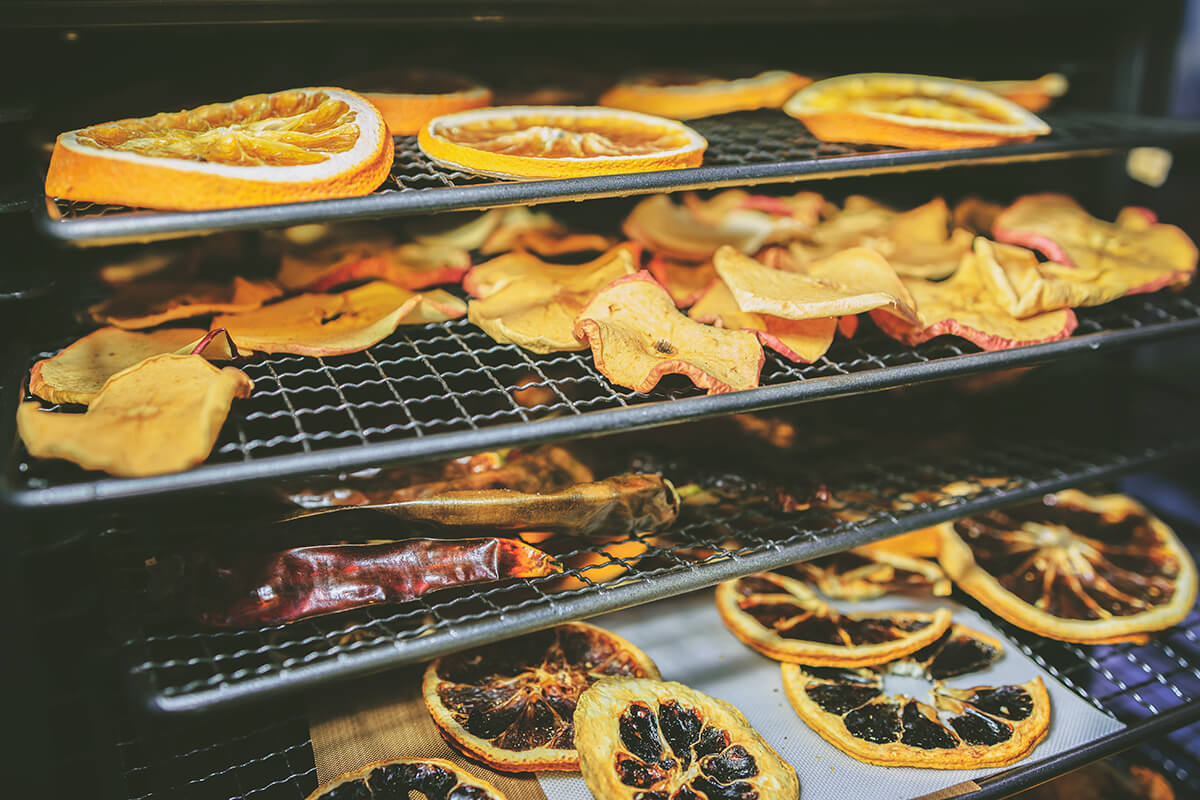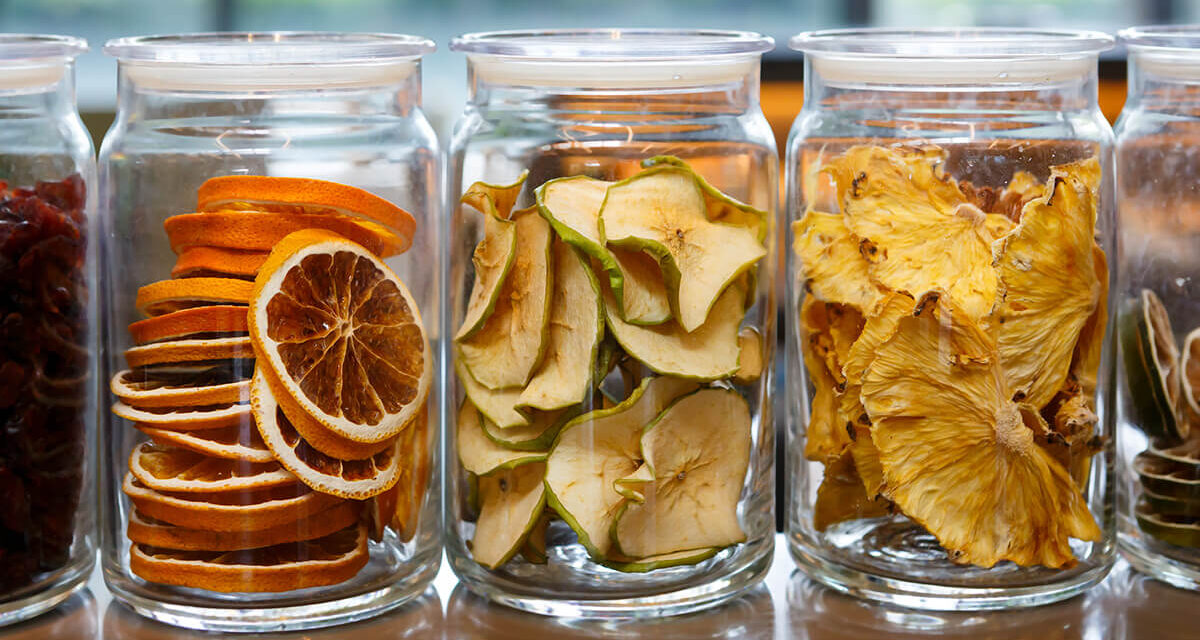There’s no better way to put the finishing touches on a delectable cocktail than by adding the perfect garnish. Featuring form as well as function, eye-catching garnishes like dried or dehydrated citrus are a great way for home mixologists to add a bit of drama to their drinks. Mastering this technique is surprisingly easy, and knowing how to create these exquisite adornments is an essential skill to add to your cocktail crafting arsenal.
Why Dehydrate?

Dried and dehydrated citrus garnishes are gaining popularity across America, and there are a few reasons why they have become a favorite with cocktail enthusiasts. Though they look very fancy–if you want an enviable photo-op for #drinkstagram, this is it–many bartenders also appreciate these edible dried garnishes for their time-saving efficiency. By being prepped well in advance of cocktail hour, they reduce waste and streamline the cocktail crafting process. Since they are generally dried in large batches, they are also easy to keep on hand in sealed glass jars.
Dried citrus garnishes are also a feast for the senses. It is hard to argue with the stunning stained-glass color contrast of a dried orange wheel pinned to the rim of the glass or floating on the surface of the cocktail. In addition to being aesthetically-pleasing, dried citrus garnishes have intense aromatic appeal. By adding aroma without the addition of extra citrus juice or flavor, dried and dehydrated garnishes offer the added benefit of keeping cocktails balanced and undiluted.
How to Dry or Dehydrate

There are two methods for creating this dazzling garnish: dehydrating and drying. They use the same basic process to extract liquid from citrus fruits, though the former requires a dehydrator. To get started, citrus fruits should be washed and dried thoroughly. Slice ¼-½’’ thick, using a very sharp knife or a mandolin for precision.
If using a dehydrator, arrange the slices evenly in the dehydrator trays and set the machine to medium-high for four to six hours, or until the edges of the citrus curl slightly and the flesh of the fruit feels dry to the touch. When using an oven, place the slices in a non-stick, aerated pan. Set the oven to 160°F for six to eight hours, turning the pans every two hours or so. When stored in a sealed container in a cool, dry place, dried and dehydrated citrus has a shelf life of at least one month.
Dried Citrus in Cocktails
Many cocktails lend themselves to dried or dehydrated citrus garnishes, and there are a wonderful variety of citrus fruits to experiment with. While the usual suspects like lemon, orange, and grapefruit are lovely with classics like Gin & Tonics and Lemon Drops, there are plenty of cocktails that pair beautifully with tangerines, Meyer lemons, Key limes, blood oranges, and tangelos. The Hugo, for instance, adds a tangy taste of the tropics to a refreshing blend of prosecco, lemon balm, soda, and mint with a slice of dehydrated lime floated atop the cocktail. A dried orange wheel is an elegant topper to the Frankly, My Dear cocktail, which features gin, triple sec, apricot brandy, yuzu puree, and sugar.






